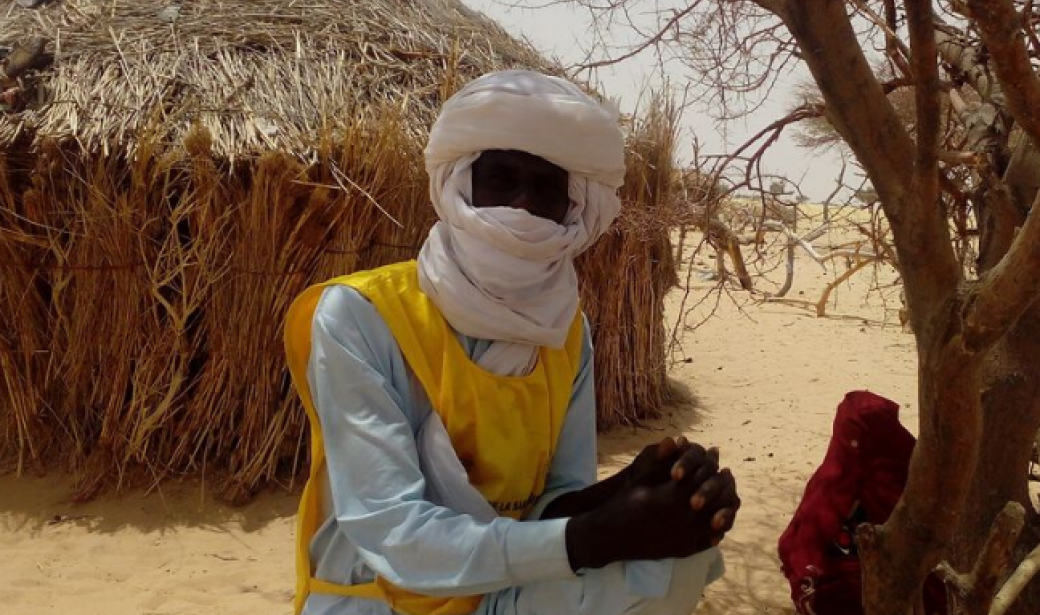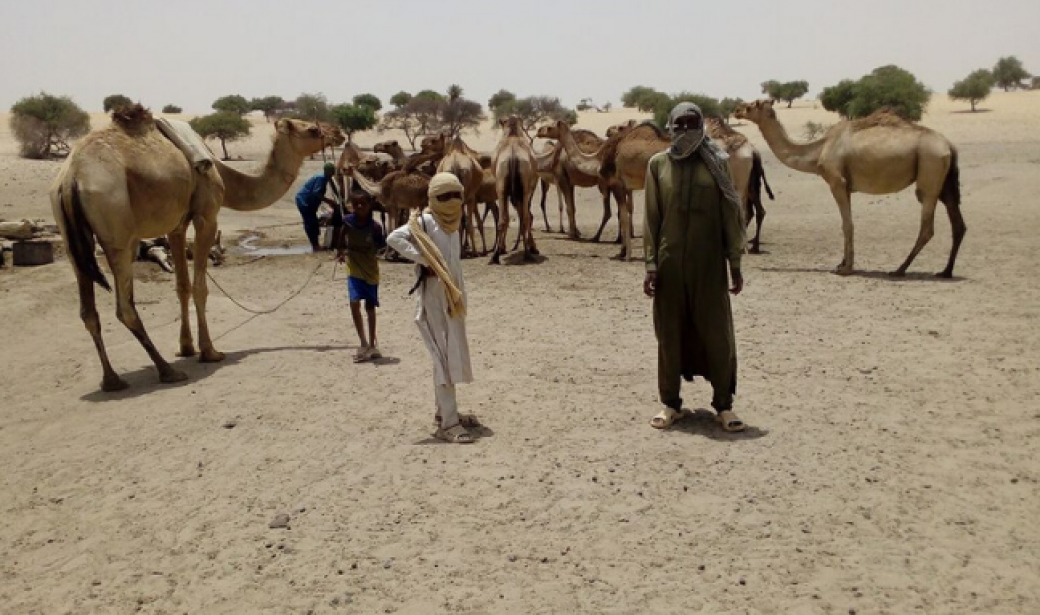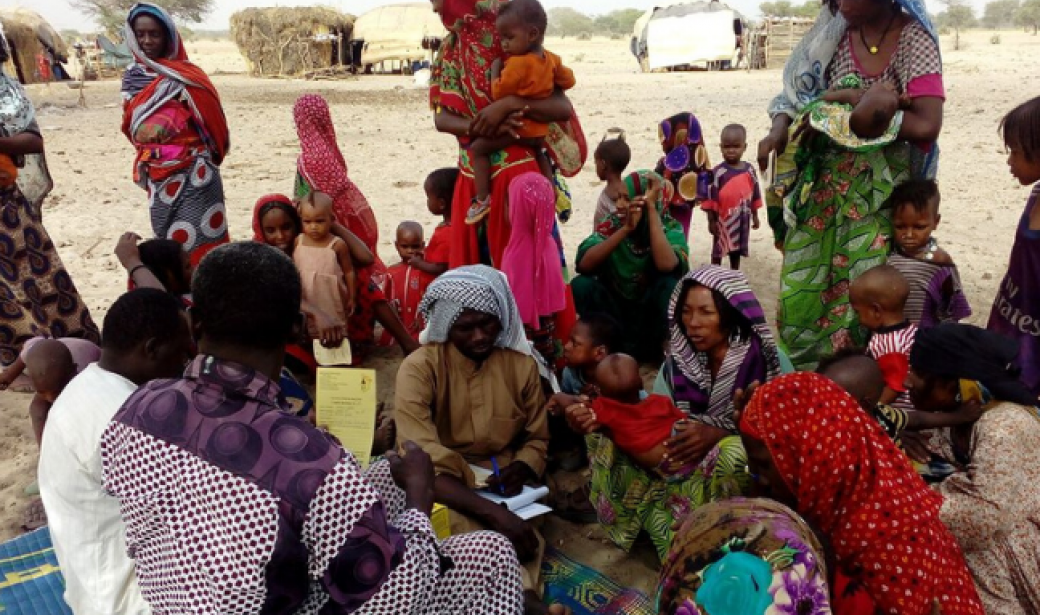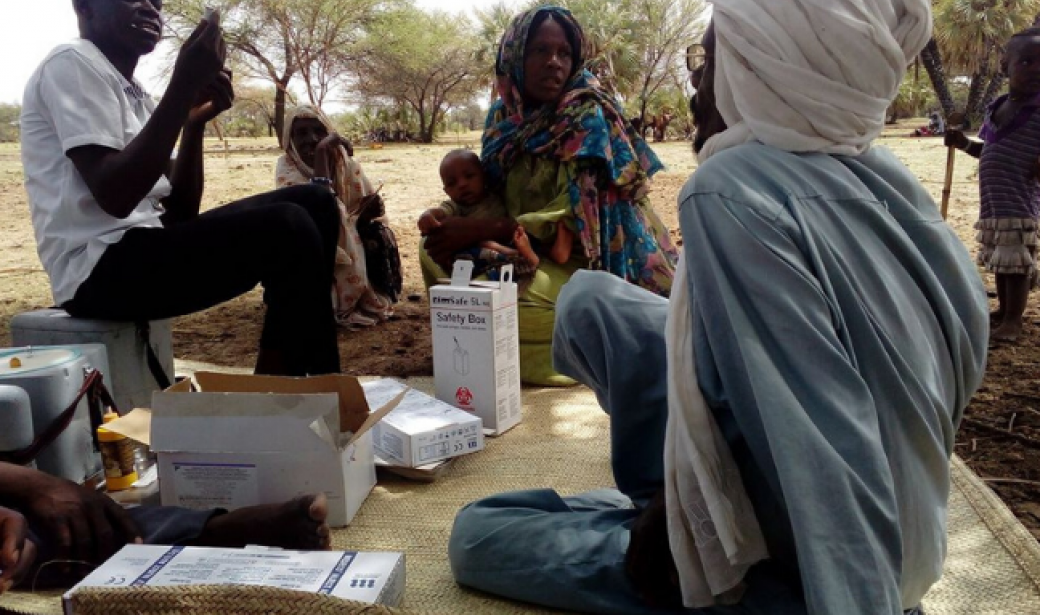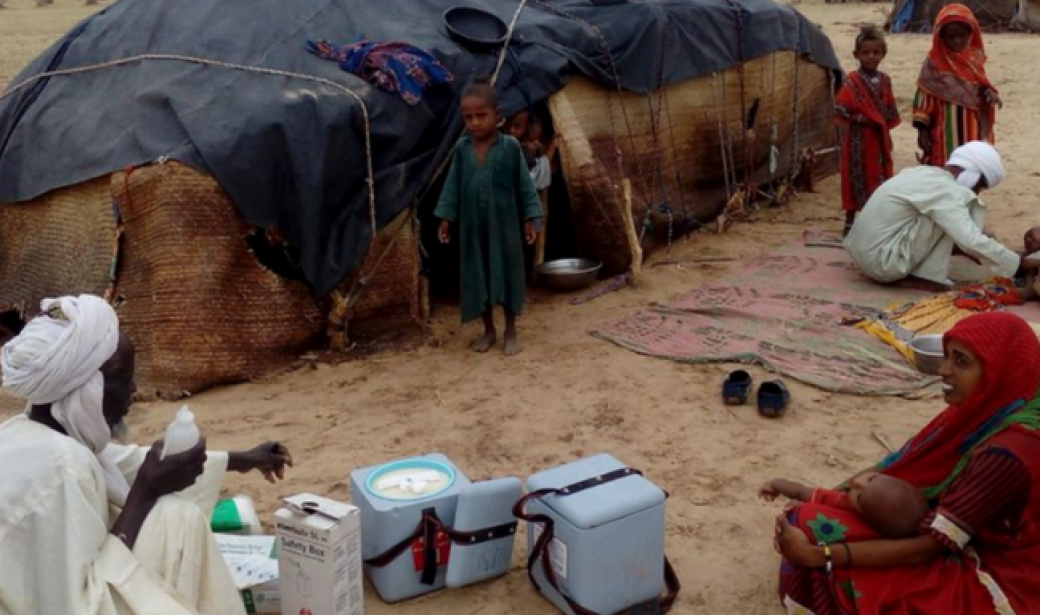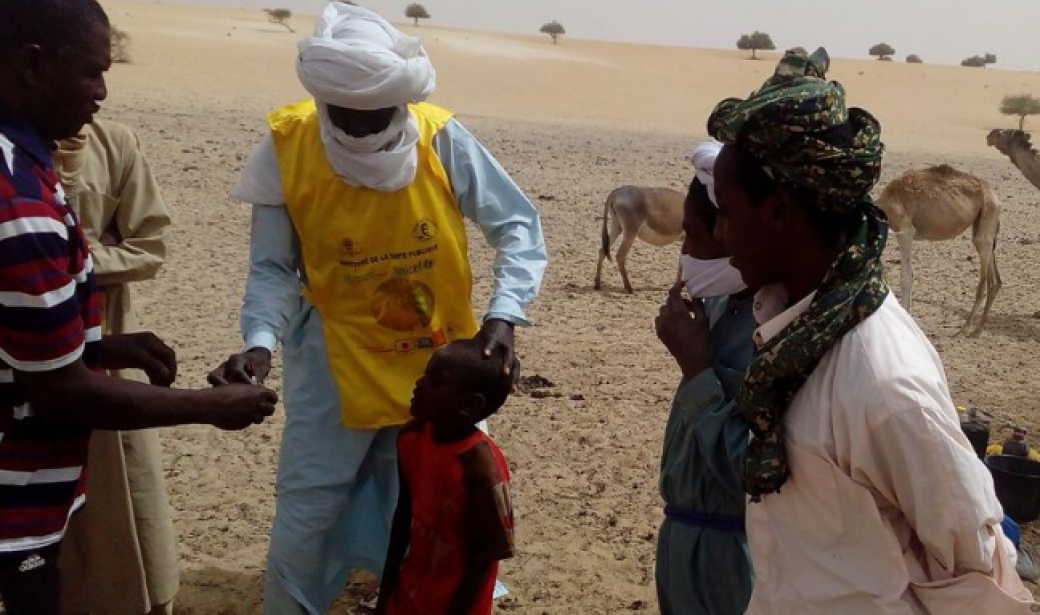GPEI
When cases of wild poliovirus were detected in northern Nigeria in 2016, after more than two years without any reported case, the momentum for declaring the Africa region polio free was disrupted. A proactive response in the neighbouring countries of the Lake Chad Basin was quickly organized to overcome the immunization gaps, covering Cameroon, Central African Republic, Chad, Niger and Nigeria. Coordinated vaccination campaigns in all five countries reached tens of millions of children. But as with most health and social services, it was difficult to include the nomads of the Lake Chad basin because the authorities didn’t know where to find them.
GPEI
The movement of the nomadic pastoralist populations often traverses transnational borders. The nomads of the Lake Chad Basin account for around 3%–5% of the total population and are one of the most underserved communities regarding health and other social services. This makes them considerably at higher risk than ordinary populations of contracting many diseases. Yet, they are often left out of routine immunization and certainly missed by target campaigns because their residence changes with the seasons.
Until this year, few health policies or plans targeted nomadic populations, let alone set out to find them.
Until this year, few health policies or plans targeted nomadic populations, let alone set out to find them.
GPEI
Working together with new technology applications to create a database of population numbers and immunization records, the World Health Organization (WHO) and the United States Centers for Disease Control and Prevention (US CDC), with support from other partners, began following nomad groups, concurrently in Chad (featured in these photos), Cameroon and Nigeria, followed soon after by Niger and the Central African Republic. “Lake Chad response teams”, each with four specialists – an epidemiologist, a social mobilizer, a vaccinator and a data recorder, fanned out to reach every last child among the nomads.
GPEI
Finding the nomadic groups often meant speaking to people in a market or on a road and asking to follow them to their camp if they were members of one of the many ethnic groups who move across the large expanse of desert or semi-arid savannah in search of food resources for their livestock. The Lake Chad Basin covers almost 8% of the African continent, with an area of about 2.4 square kilometres and is ringed by mountains. Upon arriving in a camp, the response teams would first converse with the elders of the family groups (above) to explain the immunization process and ask permission to vaccinate the children.
GPEI
The social mobilizer in each response team explained to parents the purpose of the vaccination and what it would mean for their children. They then asked questions about their family group and where they tended to camp throughout the year and inputted that information into the nomad database.
“They see themselves as neglected in society,” explains Ajiri Okpure Atagbaza, a GIS consultant in the WHO Regional Office for Africa Geographic Information System Centre, who spent three years as part of the Chad response team following nomads. “When you came with aid, they welcomed you. As long as you spoke their language, they were open to it.”
“They see themselves as neglected in society,” explains Ajiri Okpure Atagbaza, a GIS consultant in the WHO Regional Office for Africa Geographic Information System Centre, who spent three years as part of the Chad response team following nomads. “When you came with aid, they welcomed you. As long as you spoke their language, they were open to it.”
GPEI
The Lake Chad response team set out to increase the immunity of the nomad populations against poliomyelitis and conduct acute flaccid paralysis surveillance (as an indicator of the poliovirus) but to also provide children with all needed immunizations. The smartphone application each team carried captured the locations of the nomadic camps and critical variables, such as the time of inhabitation, information on the group at the camp (typically extended families), previous and future camp locations, camp population estimates and the acute flaccid paralysis case surveillance. The response team recorder above enters information on the numbers of children vaccinated and total population.
GPEI
The movements of nomadic groups within countries are not well understood, which makes their inclusion in public health interventions complicated. But in the global drive to eradicate polio and safeguard against other vaccine-preventable diseases, governments and the Global Polio Eradication Initiative partners, like WHO, the US CDC, the Bill & Melinda Gates Foundation, Rotary International and Gavi, the Vaccine Alliance, are determined to reach every child, no matter how wide the savannah, how high the mountain or how deep the jungle.
GPEI
Declaring that a WHO region is free from any poliovirus requires a period of at least three years with no detection of new cases in either a person or the environment. Of the three types of wild poliovirus, the world was certified free of type 2 in 2015 and this month, the world was certified free of type 3. The last case of type 1 in the WHO African Region occurred in 2016, which means the region is on the way to being declared free of all three types of wild poliovirus in 2020 (type 1 is still circulating in Afghanistan and Pakistan, thus the world is not yet free of all three types). Immunizing the nomadic populations of Chad and across the Lake Chad Basin is necessary to reach the goal of a polio-free world.
GPEI
Over five months this year, beginning in April, the Lake Chad response teams reached 1067 nomad groups in 17 districts in Chad alone and vaccinated more than 27 000 children in that one country. In all five countries, more than 40 000 children in 3451 nomad camps in 62 high-risk districts received their routine immunization, including protection against polio. They represented 13 different ethnic groups and 156 subethnic groups. The likely location of these children can be monitored in the Lake Chad database, and this information can be used in routine immunization planning to ensure that they and new generations of children receive their immunizations according to the schedule.
Pour de plus amples informations ou pour demander des interviews, veuillez contacter :
Saya Oka
Communications Officer, WHO Africa Health Emergencies Programme
Tel: +242 06 508 1009
Email: okas [at] who.int
Collins Boakye-Agyemang
Communications and marketing officer
Tel: + 242 06 520 65 65 (WhatsApp)
Email: boakyeagyemangc [at] who.int



